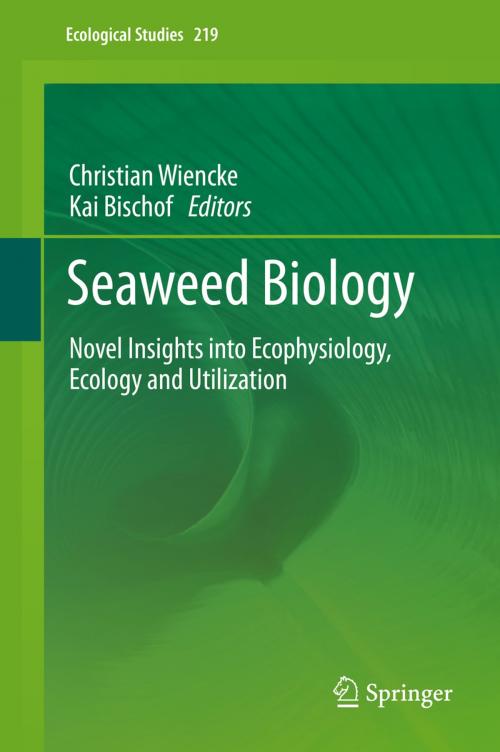Seaweed Biology
Novel Insights into Ecophysiology, Ecology and Utilization
Nonfiction, Science & Nature, Science, Biological Sciences, Botany, Ecology| Author: | ISBN: | 9783642284519 | |
| Publisher: | Springer Berlin Heidelberg | Publication: | June 6, 2012 |
| Imprint: | Springer | Language: | English |
| Author: | |
| ISBN: | 9783642284519 |
| Publisher: | Springer Berlin Heidelberg |
| Publication: | June 6, 2012 |
| Imprint: | Springer |
| Language: | English |
Seaweeds, also known as macroalgae, are among the most important primary producers and act as ecological engineers on rocky coasts of the world’s oceans. In addition to their extreme ecological importance they are also of high economic relevance. Complementing available textbooks with its more research-oriented approach, this volume contains 22 chapters by renowned experts, grouped in five parts. In Part I fundamental processes and acclimation strategies of seaweeds towards the abiotic environment are covered. Part II focuses on the multitude of biotic interactions in seaweed communities, and in Part III the reader is introduced to the structure and function of the main seaweed systems of the world. The chapters of Part IV highlight and discuss the effects of global and local environmental changes on seaweeds and their communities. In the final Part V a comprehensive overview of developments in seaweed aquaculture, industrial applications and the overall economic importance of seaweeds is provided. Summarizing the advances in seaweed biology achieved within the last few decades, this book also identifies gaps in the present knowledge and needs for future research.
Seaweeds, also known as macroalgae, are among the most important primary producers and act as ecological engineers on rocky coasts of the world’s oceans. In addition to their extreme ecological importance they are also of high economic relevance. Complementing available textbooks with its more research-oriented approach, this volume contains 22 chapters by renowned experts, grouped in five parts. In Part I fundamental processes and acclimation strategies of seaweeds towards the abiotic environment are covered. Part II focuses on the multitude of biotic interactions in seaweed communities, and in Part III the reader is introduced to the structure and function of the main seaweed systems of the world. The chapters of Part IV highlight and discuss the effects of global and local environmental changes on seaweeds and their communities. In the final Part V a comprehensive overview of developments in seaweed aquaculture, industrial applications and the overall economic importance of seaweeds is provided. Summarizing the advances in seaweed biology achieved within the last few decades, this book also identifies gaps in the present knowledge and needs for future research.















